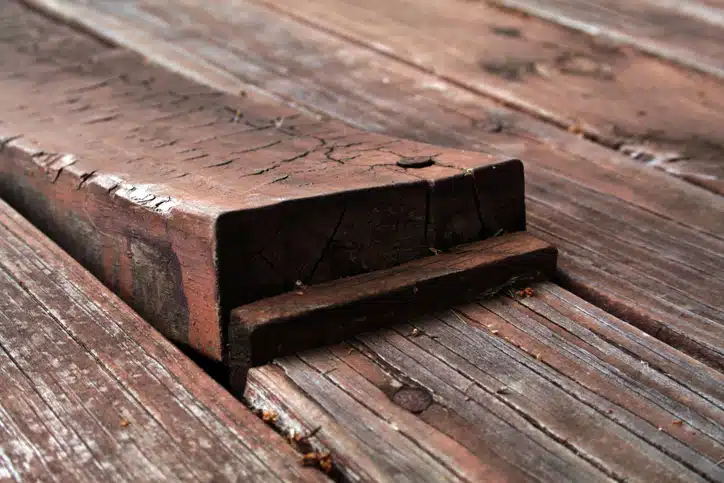All wooden decks need regular maintenance to last. Weather, especially rain and snow, can make wood a little undependable, especially if it’s untreated. Without the proper protection and maintenance, you’ll start noticing more and more boards warping throughout the structure. It’s definitely very frustrating to see your deck twisting right before your eyes, but these warped boards can be dangerous too. In this blog, we’ll break down why boards will start warping and how you’re able to prevent it in the future.
Why do wood boards warp?
Wood is a natural material, therefore it works with nature if it’s left bare. It adjusts to whatever the humidity is in the air because it’s always trying to reach an equilibrium moisture content. What this boils down to is that it will expand and shrink to match how much water it feels in the air.
Are there different types of warping?
Yes, warping can happen in a few different ways depending on the size and type of wood. These are:
- Bow: This is when the boards curve lengthwise up or down. Widthwise it will remain flat.
- Cup: This happens when the board forms a channel because the board curves widthwise.
- Twist: This happens when the board twists itself around like a curl.

How can you prevent boards from warping?

Choosing the right lumber is the most important step. Any species of wood can warp to some degree, but the denser it is the less likely warping happens. Cedar is a popular choice for this reason. Once the deck is built a sealant is very important to not only prevent the boards from warping with the weather changes but from other issues as well.
Looking For The Best NO WhatsApp DP On The Internet? Your Search Is Now Over!
Correcting vs. Replacing
If the warping is not severe, you might be able to clamp or add weight to the board to straighten it back out. Generally, the warped board will need to be replaced. Afterward, a layer of sealant will be added to protect not only the new boards but the rest of the deck.


